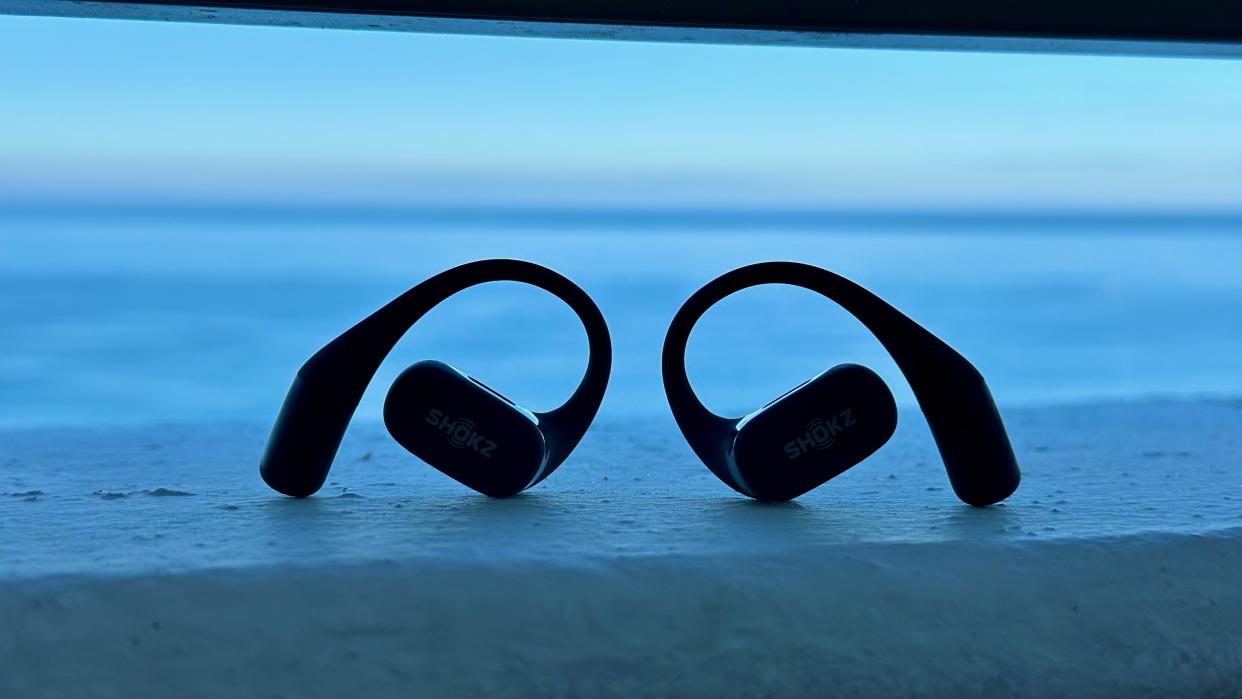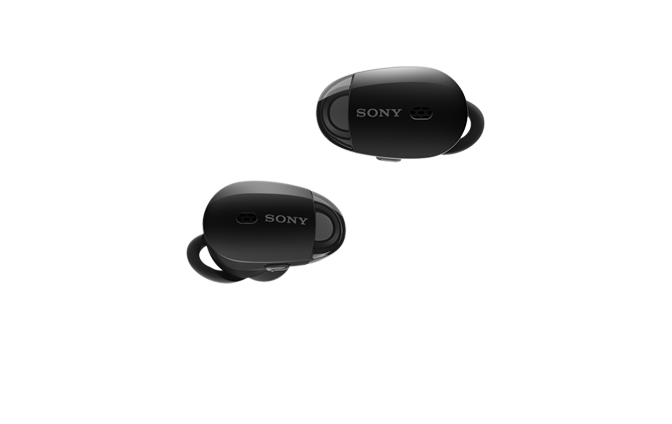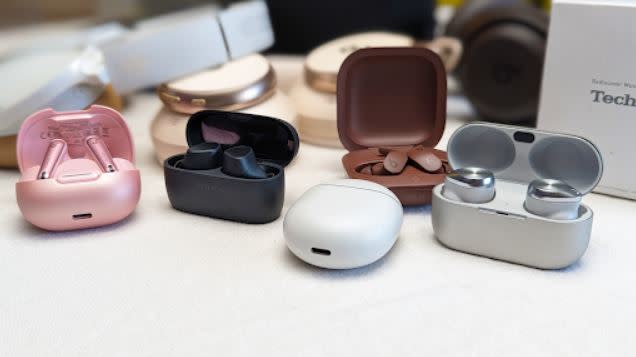Transparency mode killed open-ear headphones for me

So, you work in a warehouse. Or maybe you love going for a run in an urban environment. In both cases, you want some music to help pass the time or motivate you to get that run done, but hearing what’s going on around you is absolutely mission-critical.
Do you use open-ear earbuds that have tips or sound-emanating technologies that don’t sit inside of or plug up your ear canal? Or do you go with a pair of truly wireless earbuds that have that “transparency mode” feature, which uses the microphones embedded in the buds to allow you to hear your music at the same time that they also allow the sounds of the outside world in?
I’ve reviewed quite a few of both, and though I’ve found some open-ear earbuds to be quite good, I recently found myself asking the question, “Has the quality of modern-day transparency modes killed the open-ear earbuds?” Hear me out.
Kicking things off with open-ear

Whether it’s bone conduction, earbud tips that are shaped in a manner that allows environmental noise in, or earbuds that have holes in them like donuts, there are quite a few options on the audio gear market for those who want their ability to hear, unobstructed. I’ve reviewed quite a few of them and have even been impressed by the sound quality of some. Impressed by what they’re able to achieve sonically despite the limitations that come with not having an earbud tip inside your ear canal.
You could work in a warehouse and listen to podcasts but still hear that forklift rolling up behind you. You could go for a run in a busy metropolitan area and keep your situational awareness, listening out for cars, folks on bikes, or people running up behind you.
With open ear earbuds, you could even enjoy the wonders of an open floor plan office space, and all of the delightful conversations distracting you from getting work done. /sarcasm
One of the first open-ear, or in this case, bone-conduction earbuds/headphones hit the market in 2013 when Shokz (then called AfterShokz) introduced their Bluez headphones. Others would follow with their own take on open-ear designs, like the somewhat recent Sony LinkBuds. However, after their first pair of open-ear headphones, Shokz would go on to innovate in the space, improving audio quality to an impressive degree, launching their Titanium headphones with great success via Indiegogo in 2015.
And all was good. Almost. Then, the crowd funded a new thing.
The emergence of 'Transparency mode'

In 2016, a small company out of San Francisco, Nuheara, launched its own Indiegogo campaign, bringing the IQbuds to backers in 2017. As far as I can tell, these were among the first earbuds to have an audio pass-through mode. This was part of a technology they called “SINC,” or Super Intelligent Noise Cancellation. The company hit its funding goal of $100,000 in just two hours, and by the end of the campaign, Indiegogo closed out with $792,944, backed by 3,594 people in over 60 countries.
Around that same time, however, Sony launched the first generation of its venerable ANC earbuds, the WF-1000X, with what it called Ambient Sound Mode. And we know how those have progressed over the years, with the WF-1000XM5 being one of the most best noise-canceling earbuds on the market. And their Ambient Mode has a reputation for being outstanding!
There were other earbuds that would come along and innovate with audio pass-through technology, and in the years since Nuheara first debuted, Apple, Jabra, Sennheiser, Samsung, Google, and others would all bring products to market with audio pass-through, just under different names. And it’s been getting better and better ever since.
The death knell for open ear

During one of my last open ear earbuds product reviews, I had to ask myself if that technology is really relevant anymore now that Transparency mode — also known as HearThrough or Augmented Hearing — provides an experience akin to hearing aids. In some cases, they’ll specifically augment the sounds of voices around you, not just ambient environmental sounds. And they’ll do so without sacrificing the bass and sub-bass like most open-ear earbud designs do. You get the environmental awareness without sacrificing sonic fidelity.
As a reviewer, I always find myself tempering readers’ expectations with open ear earbuds, warning them about the compromise in lower frequency sound reproduction. But with modern audio pass-through, there’s no need for that! When I test closed earbuds that have an audio pass-through mode, I often do so by wearing them for hours on end at work. If they’re comfortable enough, I’ll wear them for the entire eight and a half hours — if they have the stamina.
Carrying on conversations with coworkers without missing a beat and hearing breaking news called out over the in-house speaker system is a mission-critical need where I work. For serious testing, I basically turn that pair of earbuds into my “ears” for the day, and some of the best active noise canceling truly wireless earbuds are so comfortable that I forget I’m wearing them. Furthermore, their HearThrough modes are so natural that I am only reminded that I was wearing them because they do tend to augment my hearing, even if just by degrees.
I love small businesses and innovators, and I love to see them winning! So, I’m going to do something I rarely do, but it’s necessary in this case. With the quality of Sony’s WF-1000XM5, Samsung’s Galaxy Bud 2 Pro’s Ambient Mode, or Jabra’s Elite 10 HearThrough, there’s simply no reason to opt for open ear earbuds anymore.
Well, maybe one. Battery life.
Is Exceptional Battery Life Enough?

If there's one major downside to standard closed wireless earbuds, it's battery life. Things have gotten better over the years, but the single-charge battery life for the best wireless earbuds still pales in comparison to open-ear buds, and that can be a dealbreaker for some.
At best, you’re going to get up to eight hours of battery life out of one of the best truly wireless noise-canceling earbuds on the market before having to place them in their case to recharge. On the other hand, er, ear, some of the best open-ear earbuds on the market today, will get you up to 14 hours of playback on a single charge.
Of course, battery life is just one factor, but it can be a determining one for many. Now, you have to ask yourself if you'd prefer a pair of earbuds that:
Support Dolby Atmos or Sony 360 Reality immersive audio tech and will reproduce those mixes with brilliant sound separation that gives you not only crisp treble and solid mids but also deep bass and sub-bass.
Can be worn in busy urban environments or on planes or trains and cancel out the hum of that transport’s engines.
Support audio pass-through, which may even augment the sounds of the environment around you.
Provides 24-bit Hi-Hi sound quality, which reproduces every bit of those frequencies (for the most part).
Or would you rather have a pair of earbuds that:
Get you up to 14 hours of battery life/playback.
Reproduce decent sound, but lack punch in the lower frequencies.
Have an open design that allows you to stay more present and aware of your surroundings.
Keep in mind that both options will have some similarities, like water resistance ratings, rechargeable cases, and multipoint pairing. What it comes down to is the kind of audio experience you want to have with your earbuds.
That said, for me, the choice is loud and clear. Or, dare I say it, “transparent?”

